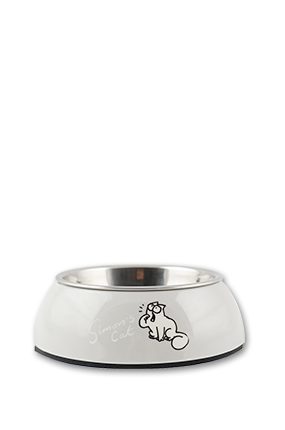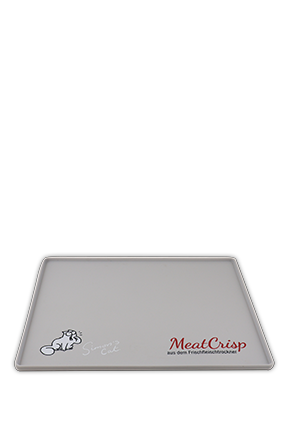Switching food in cats
My cat won’t eat their new cat food
Does your cat not eat the food you have chosen with so much effort and love? Rest assured, you are not alone in this. There are few happy cat owners for whom switching food works without any problems. So you're in good company, and you're not the first to look around for tricks to help with the switch in food either. Important to know: Cats are very particular about their food. They will not eat every cat food and once they have found a food, it is difficult to get cats used to it again. Cats are specialised prey eaters and at the same time absolute creatures of habit, they do not eat everything out of instinct and also have no need to try unfamiliar things at all costs. In the wild, cats learn during their formative phase that they can easily digest a mouse, for example. In this way, they avoid the imminent danger of ingesting something toxic or difficult to digest. If you have been giving a cat a certain food for a long period of time, that food has proven itself to be tasty and non-toxic. Your cat would not think of changing cat food because another one might be healthier. It therefore usually takes consistency and perseverance to convince a house cat to eat a different food.
If cats refuse a food, it does NOT mean that the food does not taste good, but that the cat is not used to it and does not want to take a risk. A cat would therefore never switch to a better or healthier cat food. This responsibility for proper nutrition lies with us as cat owners.
Most of the time, there is a good reason why you have changed your cat’s food, and you shouldn’t lose sight of this. Motives for changing the food might be:
- Age of the cat (from kitten to adult)
- Sterilisation
- Diseases
- Food allergy
- Hypersensitivity
- Intolerances
- Switching from dry food to wet food
- Switching from industrial food to high-quality food
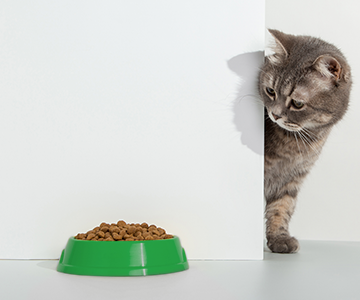 Changing the cat's diet
Changing the cat's diet
Fancy some more variety?
How can you successfully switch cat food?
It doesn’t matter how good your intentions are, you can expect resistance from most cats. A slow-paced switch is therefore very important so that the cat can get used to the taste and also the smell of the new food. This means that you add a small amount of the new cat food to the tried and tested cat food and increase the amount continuously. Start with small steps: on the first day, start with a spoonful of the new food mixed in with the old food. For small portions or particularly fussy eaters, just use half a spoonful. In the following days, slowly increase the ratio of new food. If your cat refuses food in the meantime, simply reduce the amount by one step.
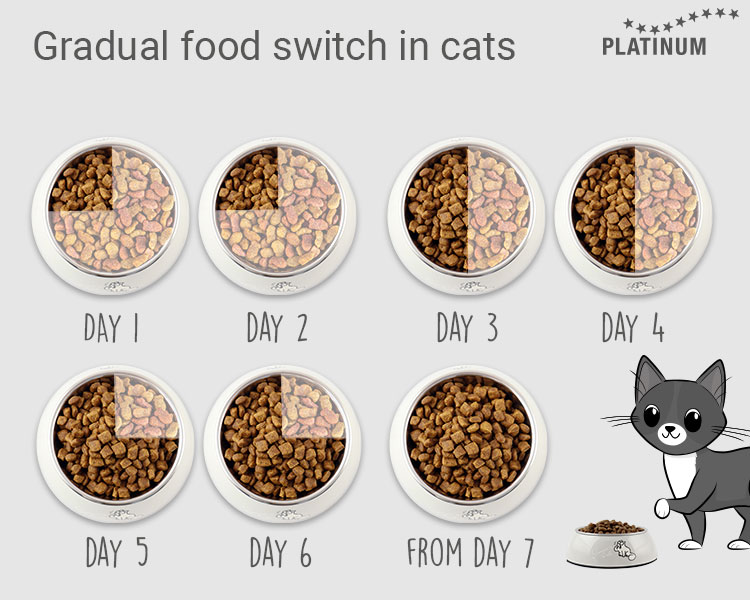
The reason why the cat distrusts the new food can have several reasons besides innate instincts. Your cat may not like the consistency if, for example, she has only had paté before or you want to change from dry food to wet food. Besides the taste, it can also be the smell. However, with a slow and consistent changeover, the cats get used to the new food step by step.
Important!!! Switching food or the process for fussy dogs is much easier: the saying “a healthy dog won’t starve in front of a full bowl” applies here. This means that if a dog refuses to eat new food, it will consider the new meal as its hunger increases. It is very important to know that this approach to changing food in cats is not effective. On the contrary: you must NEVER let your cat starve, this could be life-threatening for your cat. As described, it is better to make the change consistently in small steps.
How long does it take to switch food?
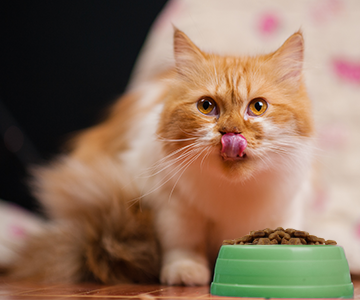 Time taken to switch your cat’s food
Time taken to switch your cat’s food
Helpful tricks for fussy cats when switching their food
- You can warm up wet food and offer it lukewarm, which creates an intense and delicious meaty smell.
- Try adding tuna water or chicken broth as well. Parmesan or brewer's yeast flakes can also win a cat over.
- When switching to dry food, you can moisten it and gradually reduce the amount of water added.
- If your cat is hungry, they are more likely to be willing to eat new food. To achieve this, you should avoid treats for snacks during the switch.
Side effects of switching food: Diarrhoea or vomiting
The entire organism, including the intestinal flora, must first get used to the new cat food. It is therefore not only advisable to switch food slowly to promote acceptance by the sensory organs through taste, smell and consistency, but also to help the digestive system to get used to it. Therefore, if your cat shows side effects such as Diarrhoea or vomiting, take a step back with the switch and reduce the additional quantity to the last amount that your cat still tolerated well. When increasing the new cat food again, you can then take smaller steps in the future. If the side effects still occur, contact your trusted veterinarian to rule out an intolerance or other causes.
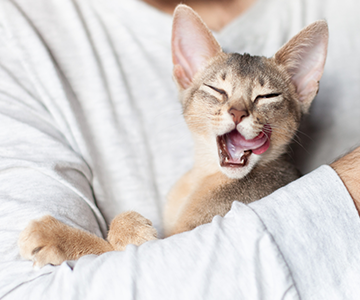 Side effects when switching cat food
Side effects when switching cat food
What do you need to pay attention to when it comes to healthy cat food?
Finally, one more tip: When switching from cheap industrial food to high-quality food, be sure to follow the manufacturer's feeding recommendation, as this food is usually more nutritious and therefore goes further. This means that you need to feed less to avoid weight gain.


 Deutsch
Deutsch
 English
English
 Nederlands
Nederlands
 Français
Français

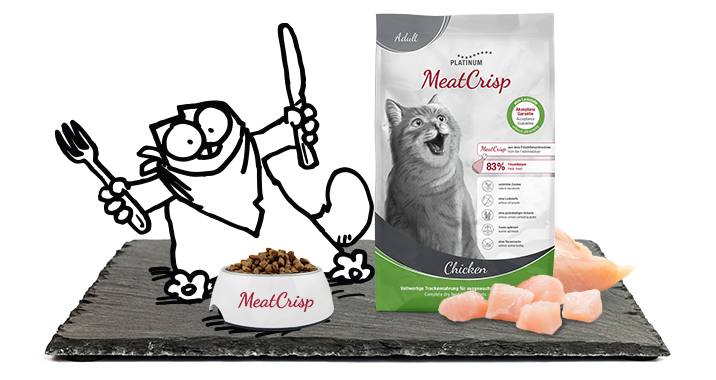
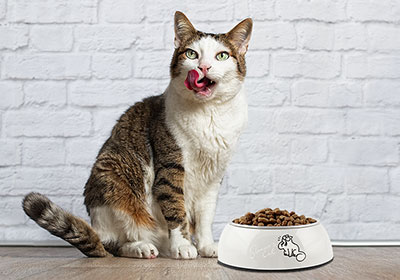
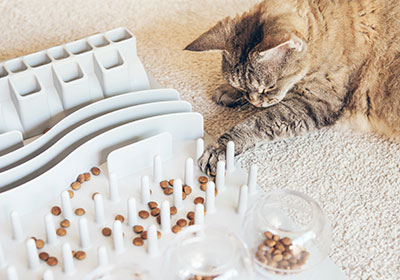
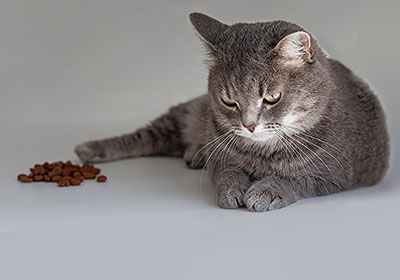
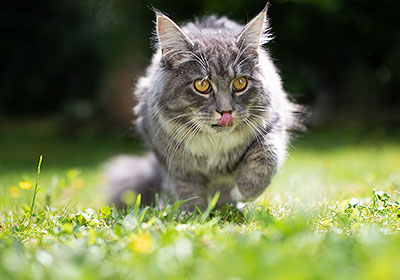
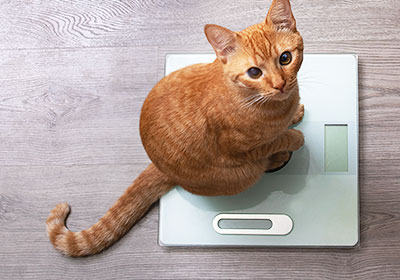
.png)
.png)
.png)
